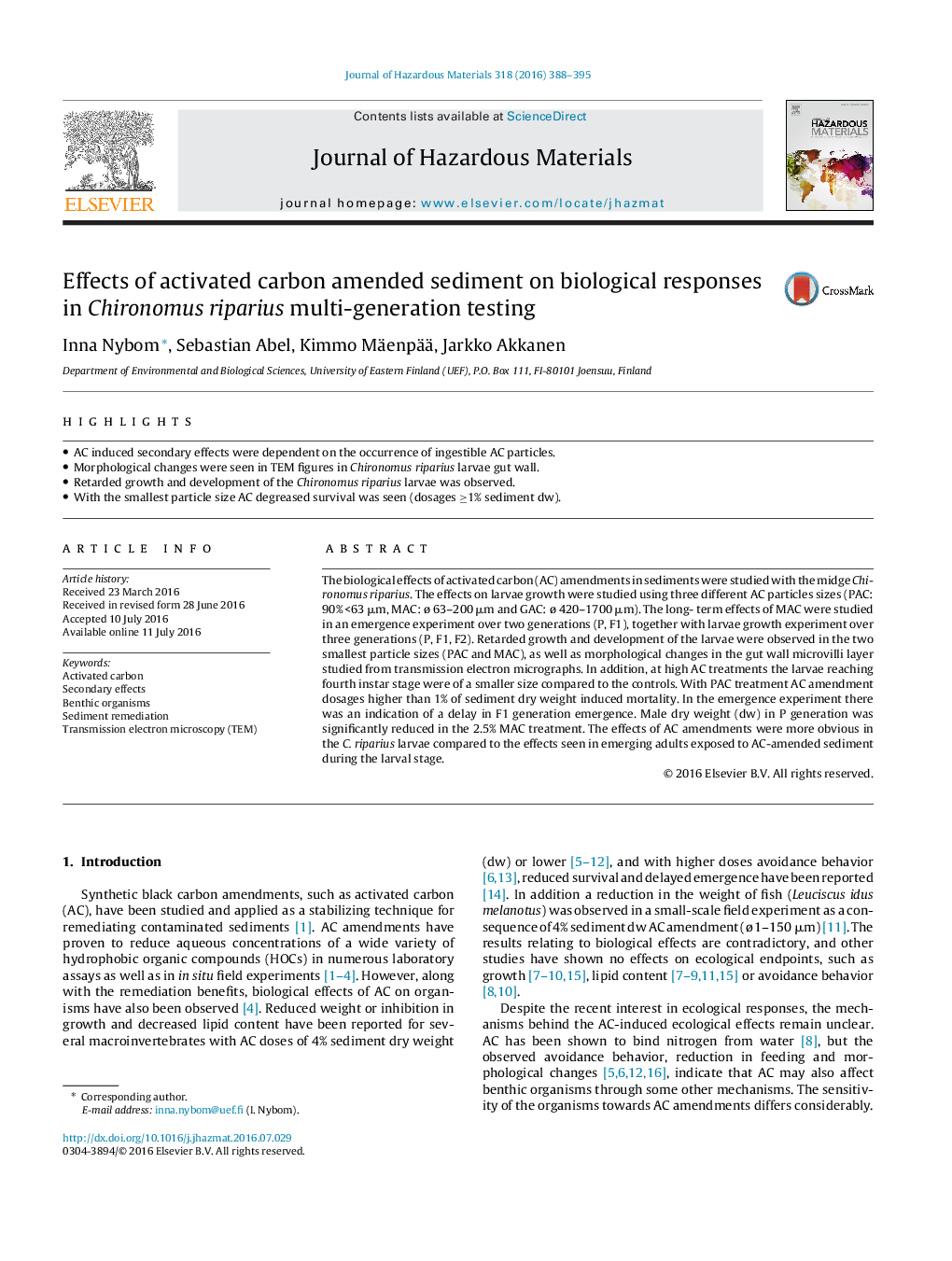| Article ID | Journal | Published Year | Pages | File Type |
|---|---|---|---|---|
| 6970065 | Journal of Hazardous Materials | 2016 | 8 Pages |
Abstract
The biological effects of activated carbon (AC) amendments in sediments were studied with the midge Chironomus riparius. The effects on larvae growth were studied using three different AC particles sizes (PAC: 90%â<63 μm, MAC: ø 63-200 μm and GAC: ø 420-1700 μm). The long- term effects of MAC were studied in an emergence experiment over two generations (P, F1), together with larvae growth experiment over three generations (P, F1, F2). Retarded growth and development of the larvae were observed in the two smallest particle sizes (PAC and MAC), as well as morphological changes in the gut wall microvilli layer studied from transmission electron micrographs. In addition, at high AC treatments the larvae reaching fourth instar stage were of a smaller size compared to the controls. With PAC treatment AC amendment dosages higher than 1% of sediment dry weight induced mortality. In the emergence experiment there was an indication of a delay in F1 generation emergence. Male dry weight (dw) in P generation was significantly reduced in the 2.5% MAC treatment. The effects of AC amendments were more obvious in the C. riparius larvae compared to the effects seen in emerging adults exposed to AC-amended sediment during the larval stage.
Keywords
Related Topics
Physical Sciences and Engineering
Chemical Engineering
Chemical Health and Safety
Authors
Inna Nybom, Sebastian Abel, Kimmo Mäenpää, Jarkko Akkanen,
